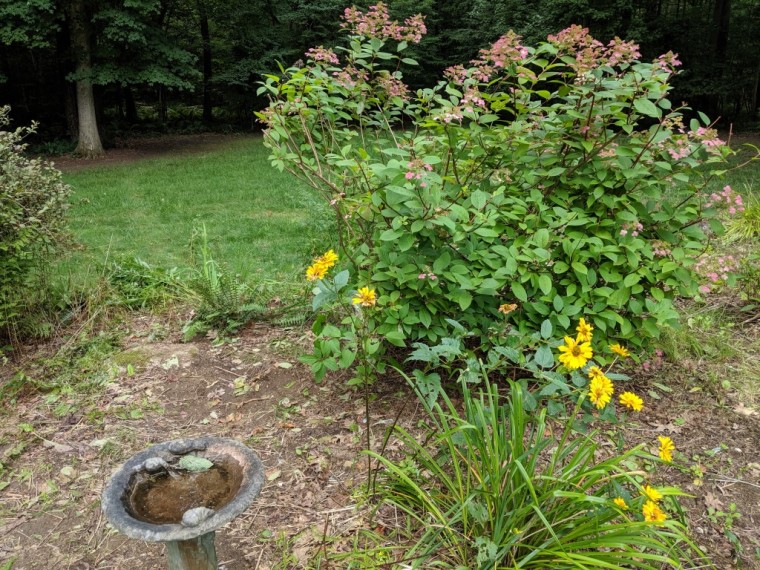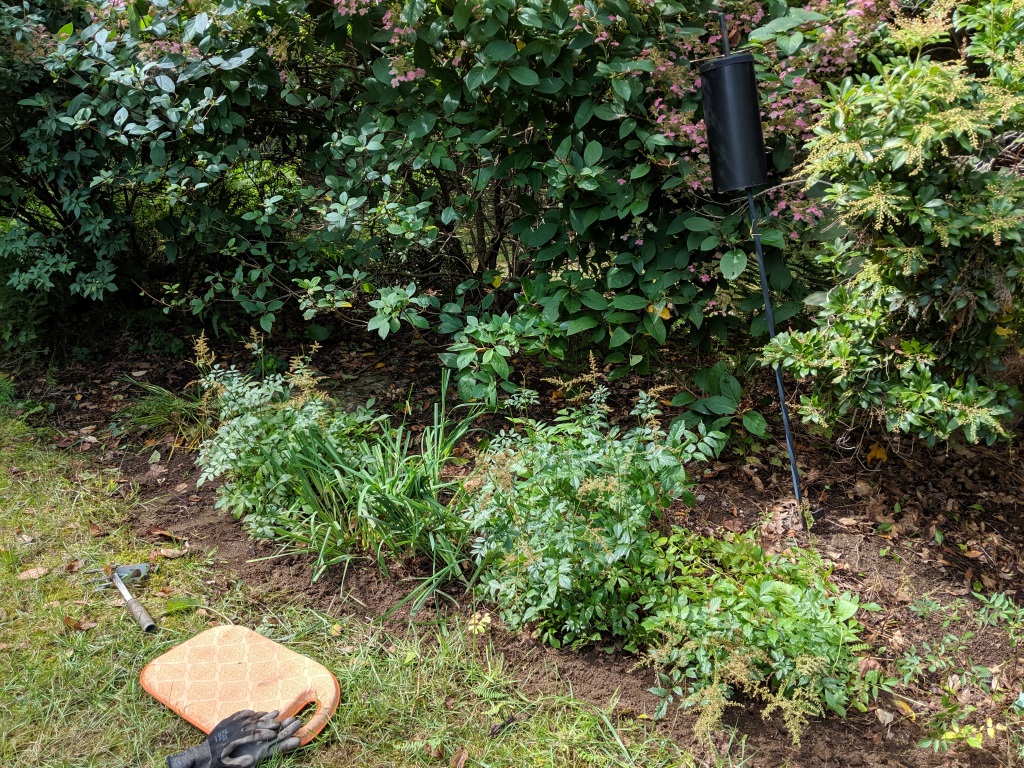Yes, I’m still at it. Still working to reclaim the garden behind my house. If we were restoring a house, we’d say we were still in the “demo” phase. Getting rid of what doesn’t belong so I can replace it with something that does.

And now I can see the effect of decisions I made years ago.
You know how the tags on the plants tell you how far apart to plant them? And how tempting it is to plant them closer together because it just looks so anemic when you plant them? Yeah that. It’s not so bad when you do it with perennials. They’re not so hard to dig up and move. But bushes that will grow to more than 6 feet high and almost as big around, with a huge root system? Bushes that would probably take a machine to move or several large men? Yup. That’s what I did. Planted them too close together.
They seemed really far apart when I planted them. I couldn’t imagine they’d fill in the space. But they did. And then some. Some have become so intertwined with each other that it’s impossible to tell where one ends and the other begins. The only way I know they’re different is that the leaves are different.
In case you’re not a gardener, having bushes this close together is a problem. For several reasons:
- The roots compete with one another for water and food, leaving both at risk.
- The plants need light, and for the air to circulate around them.
- The garden looks wrong somehow. Like a solid wall of plants, warning others away. Instead of inviting us to stroll through it.
All I had to do in the beginning was to read the instructions and be patient. I know I read the tags. I simply ignored them because I couldn’t wait for the garden to look good. I wanted it to look good right then.
And now I’m paying the price. So a few days ago I dug out a bush. Not because it was dead, though it wasn’t in the greatest shape. No. Because it was right on top of another bush that had a better chance of survival. I looked for somewhere else to put it, and quickly realized that anywhere else I’d put it would be repeating the same mistake. So, it went in the back compost pile.
It was painful, and had to be done. I needed to give the other bush some air. Some space. Once I did that, it began to respond almost right away. It was as if it had been hold its breath, or even gasping for breath.
It doesn’t stop there. Now I see other bushes that are too close together, at least in their present untrimmed state. These I decide to trim back in the hope that I can keep them where they are. Continue to shape them instead of finding a landscaping crew to move them.

(c) Kathleen Thompson. You can’t tell there are 3 bushes here.
Now I’m trimming. Can’t even reach some of the branches, so may have to go back at it with a ladder and my electric hedge trimmer. When I finish what I can reach without a ladder, I see just how misshapen these bushes are. They’ve become flat on the side that hit against the other bush, while the other side is well-rounded. In that space between bushes the branches are leggy, misshapen, only have leaves way on the outside. There wasn’t enough sunlight. When I cut them, the branches look dead. I keep them there in case they’re still alive. In case they can resurrect.
I don’t if this will work. Even after all this trimming, I may end up getting them spaced farther apart. Only time will tell.
I’ve learned a lot from this experience.
- Trust the experts. The nursery growers know better than I how far to space the plants.
- The higher the stakes, the more important it is to get it right. Large bushes are harder to transplant than perennials. The corollary to this? The more you can try something when the stakes are low, the more freedom you have to experiment.
- Sunk costs shouldn’t affect what you decide to do next, but they often do. I had already spent the money on that bush. I wanted to salvage it. It took every ounce of discipline I had to make a decision based on the facts now, and not on the fact that I had spent that money.
Do you have a bush that’s impeding the growth of something in your life? What could getting rid of it make room for? Feel free to share your story in the comments.

